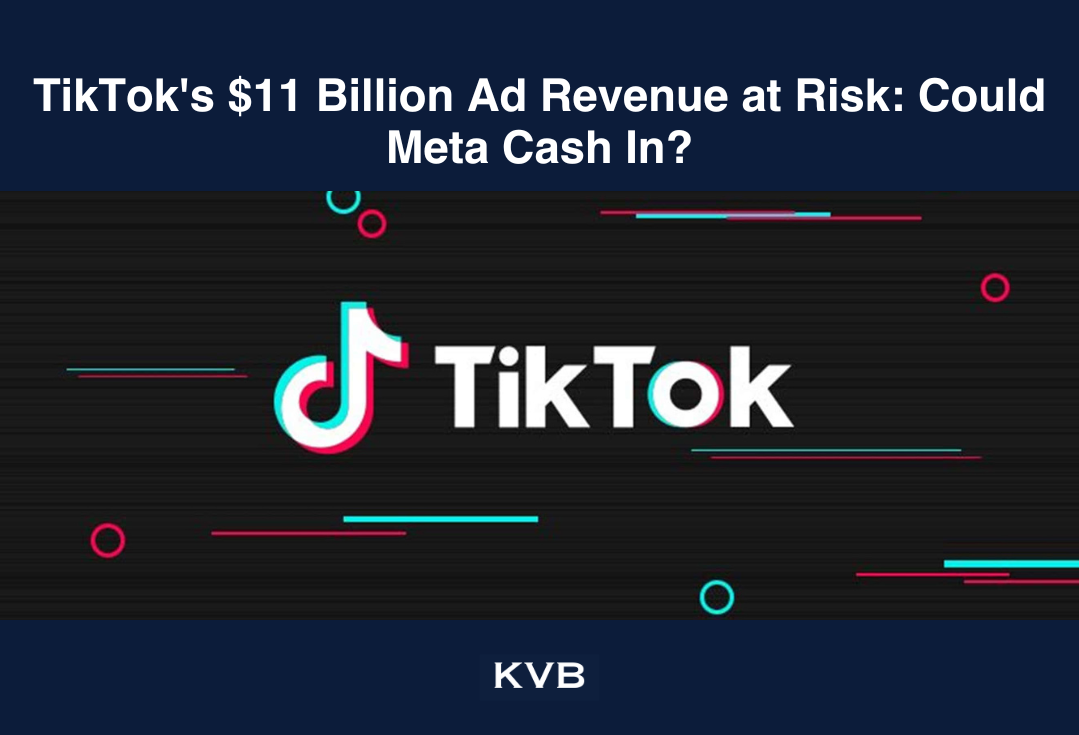


TikTok, the short-form video platform that has become a cultural phenomenon in the United States, is now facing the looming threat of a potential ban. This has created a ripple effect across the advertising industry, particularly as concerns grow over whether TikTok can continue its operations in the U.S. Amid this uncertainty, marketing executives are bracing for the worst and preparing to shift their ad spending to alternative platforms, with Meta’s Instagram emerging as a key beneficiary.
The U.S. government’s heightened scrutiny of TikTok, owned by the Chinese tech giant ByteDance, has been ongoing for years due to national security concerns. Washington has raised alarms over the possibility that user data could be accessed by the Chinese government, a situation that many lawmakers and officials deem unacceptable. As a result, TikTok has faced repeated pressure to divest its U.S. operations or face a potential ban, with deadlines now rapidly approaching.
If TikTok is indeed banned, it could have serious financial repercussions, with more than $11 billion in annual U.S. ad revenue up for grabs. According to WARC Media, the majority of this revenue is expected to shift to other social media giants, particularly Meta, the parent company of Facebook and Instagram. This would mark a major windfall for Meta, which already dominates the social media advertising space.
Advertisers have become increasingly reliant on TikTok’s unique advertising capabilities. The platform’s highly engaging, short-form video content has proven to be incredibly effective at reaching younger audiences, particularly those in the Gen Z and millennial demographics. Its sophisticated algorithm allows brands to target users with pinpoint accuracy, and TikTok’s partnership with influencers and its growing e-commerce integration have made it an essential platform for many marketers.
However, if TikTok is banned, marketers will have to quickly pivot to other platforms, and Meta’s Instagram is expected to be the primary beneficiary of this shift. Instagram, which already boasts a massive user base, is seen as the most viable alternative for advertisers looking to maintain their reach with younger consumers. The platform has made significant strides in recent years to enhance its short-form video features through Reels, which bears a striking resemblance to TikTok’s core offering. Reels has seen impressive growth in user engagement, with Instagram leaning heavily into short-form video as a way to compete with TikTok’s dominance in the space.
Instagram's ad capabilities, already robust, are expected to become even more attractive to advertisers in the event of a TikTok ban. Meta’s platform is known for its diverse ad formats, targeting precision, and established user base, making it a safe choice for brands looking to transition their ad budgets away from TikTok. Additionally, Instagram’s deep integration with Facebook’s advertising tools and its sophisticated tracking systems provide advertisers with valuable insights into campaign performance.
In addition to Instagram, YouTube Shorts, another major player in the short-video space, is also expected to see a significant influx of advertising dollars if TikTok is banned. YouTube’s established presence in digital video and its vast reach among diverse age groups position it as a strong contender to capture some of the market share previously held by TikTok. Brands that are heavily invested in video content will likely migrate to YouTube Shorts to maintain visibility with their target audiences.
While Meta stands to benefit from this potential windfall, the overall impact on the advertising landscape remains uncertain. Industry experts note that the rapid shift of advertising dollars from TikTok to other platforms could lead to increased competition for ad space, driving up prices and potentially lowering the return on investment for marketers. Additionally, advertisers who have heavily invested in influencer marketing on TikTok may need to recalibrate their strategies, as influencers will also be looking for new platforms to engage their audiences.
Despite the fears of a ban, TikTok has not been idle. The company has taken steps to reassure its U.S. users and advertisers, including offering new features and emphasizing its commitment to complying with U.S. regulations. TikTok has also taken steps to safeguard user data by moving some data storage to the U.S., but whether these efforts will be enough to stave off a ban remains to be seen.
As the deadline for a potential TikTok ban approaches, the fate of the app’s U.S. operations hangs in the balance. If the ban is enforced, the advertising world will undoubtedly undergo a significant transformation, with Meta and other platforms poised to capitalize on TikTok’s loss. For now, advertisers are holding their breath, hoping for a resolution but preparing for a shift in the digital advertising ecosystem that could reverberate for years to come.
Derivative investments involve significant risks that may result in the loss of your invested capital. You are advised to carefully read and study the legality of the company, products, and trading rules before deciding to invest your money. Be responsible and accountable in your trading.
RISK WARNING IN TRADING
Transactions via margin involve leverage mechanisms, have high risks, and may not be suitable for all investors. THERE IS NO GUARANTEE OF PROFIT on your investment, so be cautious of those who promise profits in trading. It's recommended not to use funds if you're not ready to incur losses. Before deciding to trade, make sure you understand the risks involved and also consider your experience.
